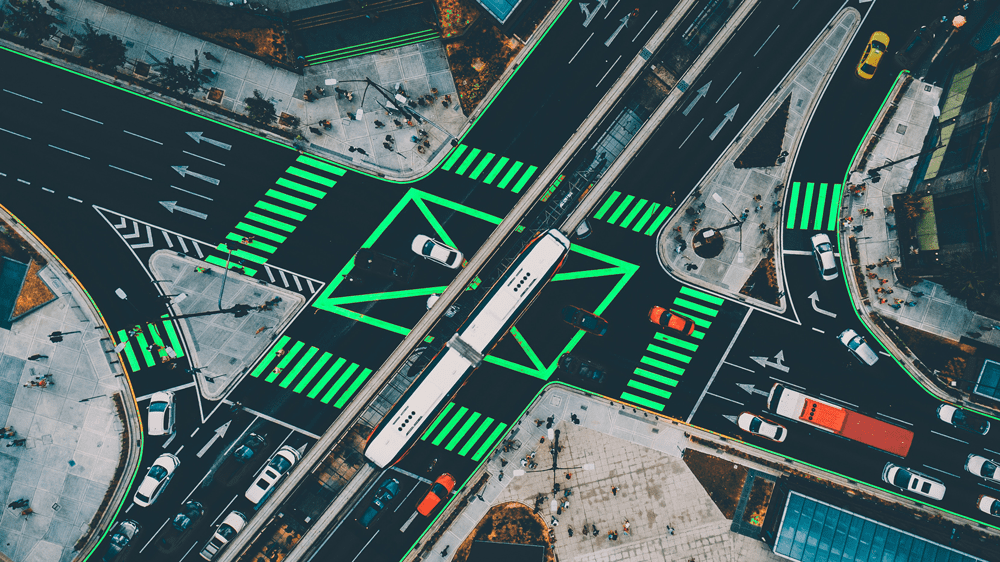Green infrastructure: the landscape of sustainability
Sustainable infrastructure is key to the low-carbon transition, Michael Wilkins from S&P Global Ratings argues in this guest blog — it mitigates the effects of climate change and helps protect communities from its impact. Unlocking private finance for this will be vital.

At the UN’s 21st conference of the parties in 2015, the world formalised efforts to combat climate change through the Paris Agreement. Since then, countries that have ratified the agreement have written up pledges known as Nationally Determined Contributions (NDCs), which specify how each party can meet the agreed target of keeping global warming from rising by 2˚C above pre-industrial levels.
So far, a cumulative US$5.3 trillion has been promised to green or carbon-reduction projects, including renewable energy generation, reforestation, and – crucially – sustainable infrastructure. Infrastructure can both mitigate the effects of climate change and help protect communities from its effects – such as natural disasters, extreme weather events, and longer-term variability in weather patterns. In both cases, this works to ensure a sustainable, prosperous economy.
Low-carbon operations
Mitigation efforts include energy-efficient buildings and low-carbon transportation. The Intergovernmental Panel on Climate Change (IPCC) estimates that transport is responsible for 23% of energy-related CO2 emissions. And to meet the 2˚C goal, the electric vehicle market must increase by 80% every year before 2025, according to the International Energy Agency (IEA). As such, the provision of low-carbon transport solutions, such as electric private or public transport, is one key aspect of the energy transition – and has the potential to achieve significant environmental benefits.
Notably, transport projects currently issue the majority of all climate-aligned bonds, accounting for US$544 billion, as identified by The Climate Bonds Initiative (CBI). The majority of this is intended for low-carbon rail infrastructure, with China Railway so far the largest issuer at US$222 billion outstanding – over a third of the total. By increasing the amount of public transportation, and working to reduce or offset the carbon production of the public network, countries around the world move closer towards achieving their NDC goals and slowing climate change.
NDCs and carbon-reduction plans intend to comprise clear, ambitious yet achievable targets for which sustainable infrastructure is essential. As the single largest polluter, China’s 13th 5-year plan (from 2015 to 2020) sets out a strategy to reduce its “carbon intensity” (CO2 emissions per unit of GDP) by 18%. Other nations have laid out infrastructure commitments relative to their climate situations. For example, the United Arab Emirates’ NDCs commit to “comprehensive infrastructure investments” for more energy-efficient, district-central cooling – a significant development given that air-conditioning accounts for a large share of the country’s energy consumption. This is a good example of how countries are able to modify their NDCs to secure the most sustainable path to climate change mitigation for them – depending on environmental, economic, and political factors.
Up against climate change
With the effects of climate change already being felt, some nations have heavily incorporated adaptation initiatives into their NDCs. Adaptation infrastructure initiatives are helping communities to adjust to unpredictable and dangerous weather events, as well as longer-term shifts in the environment. These projects include coastal fortifications that protect against rising sea levels, and more resilient roads to facilitate enhanced relief efforts, for example.
The strengthening of critical infrastructure supports continued economic and social functionality threatened by global warming. This proves invaluable when communities are faced with potential risk to property, livelihood or life from floods, storms or droughts. For instance, strong, resistant infrastructure may: reduce the devastation level of a disaster; decrease the expenditure associated with rebuilding; and speed up the economic recovery process.
Nations particularly at risk are often islands or developing countries. As a developing island nation, Fiji is much more vulnerable to the harsh effects of climate change. And as such, its NDCs include a focus on the pursuit of adaptation projects, specifically on building more robust rural housing and infrastructure such as roads, water and energy.
Finding the finance
In order to meet ambitious NDCs and facilitate sustainable infrastructure, we believe that governments will mobilise green capital via a wide range of actions. This will include sovereign green bond issuance – such as recent issues from Poland, France, and Fiji – which we expect to become increasingly popular on the back of growing green commitments. However, it is unlikely that governments will increase their expenditure and debt burdens to the extent necessary. So meeting climate change targets will likely also include private-sector funds, potentially through legislative incentives and other efforts.
These are already happening. For instance, The Global Innovation Lab for Climate Finance is an initiative aimed at driving private investment to the low-carbon economy, by developing innovative financial instruments specifically designed to unlock finance for projects such as sustainable transportation. Meanwhile, Bank of America Merrill Lynch has launched the Catalytic Finance Initiative, a consortium of leading financial institutions pledging to direct US$8 billion into high-impact projects within the field of sustainability by increasing access to funding.
Ultimately, the flow of sovereign and private capital to climate change adaptation and mitigation projects can actively support the building of both low-carbon and resilient infrastructure. In turn, this can support the realisation of NDCs for developed and developing countries – both helping to meet environmental targets and achieve sustainable prosperity in the face of climate change.
RELATED LINKS
- Alex White authored our report with the Aldersgate Group: Increasing Investment in Natural Capital, referenced also in the UK Government’s 25 Year Plan for the Environment.
- Money might grow on trees: A recent blog summarising early findings can be accessed on our blog page.
Michael Wilkins
Michael is Head of Sustainable Finance at S&P Global Ratings, where he has global responsibility for environmental finance research and environmental and climate risk research.
